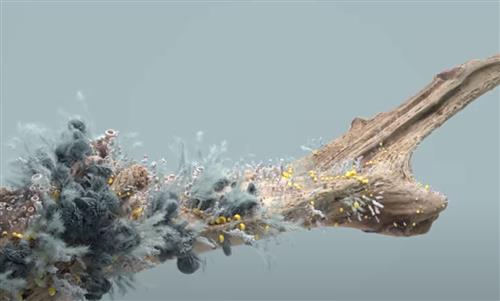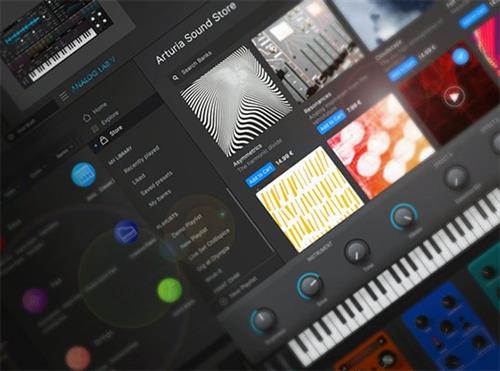
Duration: 2h 48m | Updated: Sep 13, 2021 | Video: 1280x720, 48kHz | 428 MB
Genre: eLearning | Language: English | Level: Intermediate
Learn how to deploy and maintain applications using Kubernetes Controllers. In this course you'll learn how to select a Controller for your workload, deploy it, and maintain your container-based applications in your Kubernetes cluster.

Duration: 2h 8m | Released: September 27, 2021 | Video: 1280x720, 48kHz | 279 MB
Genre: eLearning | Language: English | Skill Level: Intermediate
This in-depth course explores common Windows 10 administration tasks and tools that are key for IT professionals. Instructor Brien Posey goes over installation and post-deployment tasks, security, app performance, virtualization, and more. Brien begins with the full process to get Windows 10 installed and configured. Next, he covers post-deployment tasks like wi-fi connectivity, adding a Microsoft account, and joining an Active Directory domain. Brien dives into how to implement security in Windows 10, including biometric login with Windows Hello, password alternatives, BitLocker, and defenses against malware. Then he goes over ways to use virtualization, including hosting and managing virtual machines, using Windows Sandbox, and much more. Brien goes over ways you can manage Windows 10 updates, then concludes with useful tips on management tools like PowerShell, the Windows command line, and Remote Server Administration Tools.

Duration: 3h 19m | Released: September 27, 2021 | Video: 1280x720, 48kHz | 491 MB
Genre: eLearning | Language: English | Skill Level: Advanced
If you've learned the basics of React and have worked on many React applications, chances are you've run into some recurring problems and situations, like creating reusable layouts or working with forms. If you've been on the hunt for solutions to common problems, look no further than this course with Shaun Wassell, where he covers many of the most useful design patterns-effective and repeatable solutions to common application development challenges. This course consists of several sections, each of which will cover a group of React design patterns, ranging from preferred syntax for specific tasks to how to arrange components in the most effective way. Among the topics Shaun covers are composition, higher-order components, state hoisting, controlled vs. uncontrolled components, and many other patterns that help a React app develop into a well-organized codebase.

MP4 | Video: h264, 1280x720 | Audio: AAC, 44.1 KHz, 2 Ch
Skill Level: Advanced | Genre: eLearning | Language: English + srt | Duration: 13h 7m | Size: 11.3 GB
Discover how to be the best Photoshop user you know with reigning expert Deke McClelland. In this final installment of his comprehensive three-part One-on-One series, Deke explains how Photoshop works at its highest level. Get around Photoshop more quickly by loading dozens of new and revised keyboard shortcuts. Experience the power of Smart Filters, dynamic effects, and such seemingly mundane (but secretly awesome) topics as blur and noise. Discover how to mask images with the Calculations command, and manipulate paths with the Pen tool. Learn how to assemble 360° panoramas and work with such exotic features as layer comps, artboards, and actions. Leave each chapter with a sense of real accomplishment that you can apply to your own marketable, eye-popping artwork.

Duration: 3h 0m | Released: September 23, 2021 | Video: 1280x720, 48kHz | 390 MB
Genre: eLearning | Language: English | Skill Level: Intermediate
While the Linux operating system works with a graphical desktop interface much like Windows or macOS, with Linux, most of the system administration is done in the shell. Using the command line in the shell gives you the power to do tasks that would be more difficult using other methods, so having a solid grasp on how to use the shell can help you work faster and be more productive. In this course, Grant McWilliams provides an introduction to the Linux command line. He teaches you how to customize your shell, and shows some powerful shell tricks and shortcuts that can increase your speed and efficiency using the command line. Grant also explains how to create complex administration tools by stacking together simpler commands using named and unnamed pipes and redirects; how to start, pause, and end processes; and how to schedule one-time jobs and recurring jobs, and more.

MP4 | Video: h264, 1280x720 | Audio: AAC, 44.1 KHz, 2 Ch
Skill Level: Advanced | Genre: eLearning | Language: English + srt | Duration: 2h 56m | Size: 427.7 MB
Algorithms are one of the fundamental pillars in every software application, and once you understand them, you can create more efficient and maintainable programs. In this course, instructor Kathryn Hodge shows you how to create better C# programs by using efficient algorithms. Kathryn discusses what makes an algorithm effective, as well as how to make informed assumptions about your data to create better algorithms. She focuses on how to create efficient algorithms to work with different types of data, including strings, arrays, linked lists, queues, stacks, hash-based structures, and trees. Many algorithms are built into the C# language, and Kathryn covers how to use these to create your own custom algorithms, so you can work with your data exactly the way you want. She also dives into how to leverage different data structures to create better algorithms in analyzing or manipulating their data.

Duration: 33m 14s | Released: September 27, 2021 | Video: 1280x720, 48kHz | 90 MB
Genre: eLearning | Language: English | Skill Level: Intermediate
Do you want to explore the features of Amazon Corretto, the production-grade, open-source Java environment from Amazon? In this course, instructor Carlos Rivas walks you through everything from setup to integration. Carlos shows you how to install Amazon Corretto on both Windows and Linux and goes over how to change runtime settings when needed. He explains how to measure the performance of Amazon Corretto with some sample code, then covers how to run the same performance-measuring code with OpenJDK for comparison. After demonstrating how to include Oracle Java in your performance test, Carlos describes how to compare test results to determine which Java implementation is best for your use cases. Next, he dives into how to set up containers, such as Docker Hub and Corretto Dockerfile, and how to run a deployment from your Dockerfile. Carlos finishes up by showing you how to integrate Corretto with Visual Studio code, IntelliJ IDEA, and Eclipse.

Duration: 1h 52m | Updated: Sep 13, 2021 | Video: 1280x720, 48kHz | 200 MB
Genre: eLearning | Language: English | Level: Intermediate
Site Reliability Engineering is the implementation of efficient DevOps. This course will teach you the theory and practice of SRE in the real world. It also explains in detail the incident response and change management processes.

Video: MPEG4 Video (H264) 1920x1080 30fps 351kbps | Audio: AAC 48000Hz stereo 61kbps
Genre: eLearning | Duration: 8hrs+ | Language: English | File size: 1.1 GB
Create an intricate and detailed flowering setup using Houdini and then render this with Redshift, in this project-based training from Houdini Rockstar - Rich Nosworthy.

Tyler Coffin | Duration: 0:59 h | Video: H264 1920x1080 | Audio: AAC 48 kHz 2ch | 139 MB | Language: English
Synth wiz Tyler Coffin presents an in-depth set of Arturia Analog Lab V video tutorials! If you want to start wrapping your head around Analog Lab V's massive sonic possibilities, and all of the incredible inspiration that lies within, this is the series for you. Tyler walks you through the impressive feature-set of this awesome virtual instrument, teaching you not only the fundamentals but also dropping several more advanced tips and tricks along the way. These videos are for new Arturia Analog Lab V users.
Tyler welcomes you and begins with an overview of the plug-in interface, helping to get you oriented with the layout and basic functionality and demonstrating how to set up your MIDI controllers for a seamless workflow. Next, you'll discover the Library Menu, which is where you'll find Analog Lab V's immense list of instruments.


